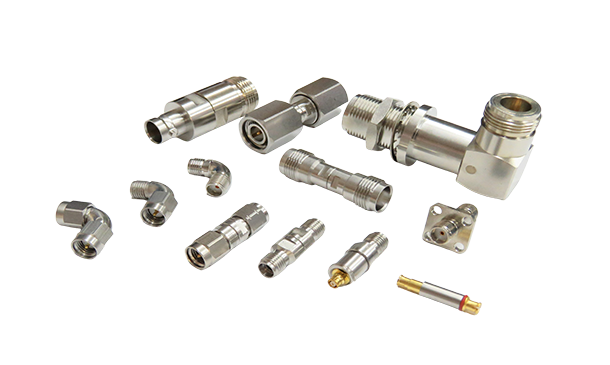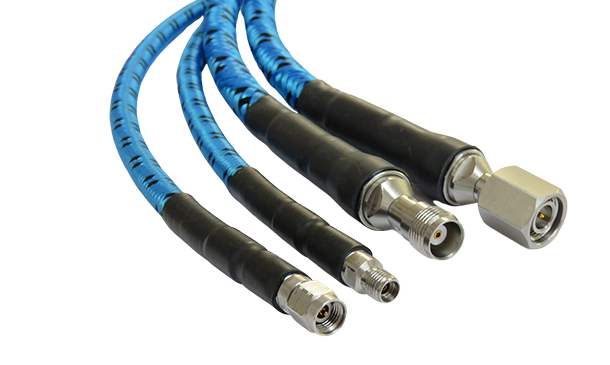- HOME
- Applications
- Blog
- What is mmWave? Advantages, Disadvantages and Applications!
What is mmWave? Advantages, Disadvantages and Applications!
24-03-21%20(1)%20(1).jpg)
5G networks are making our lives easier and satisfying our need for stable and fast data transmission. 5G networks in general rely on advanced mmWave technology, which not only delivers higher transmission rates than 4G, but also provides greater capacity. In this article, we will introduce you to the advantages and applications of mmWave to help you understand how 5G networks will continue to break through!
< Extended reading: Microwave Technology Principles and Applications >
Introduction to mmWave
mmWave is a type of electromagnetic wave, between microwave and light wave. With a wavelength of 1 to 10 millimeters, a transmission speed of 300,000 kilometers per second, and a frequency of 30 to 300 GHz. 5G has the advantages of high transmission rate, low latency, and high capacity compared to 4G technology, which not only supports more devices to be connected, but also integrates more industrial applications.
<Extended reading: Mastering 2.4mm Connectors and Adapters: Applications, Specifications, and Selection Guide>
5G
5G technology, as the fifth generation of mobile communication technology, operates in the high frequency range of 30 to 300 GHz, mainly utilizing mmWave technology, which gives 5G three characteristics of high speed, low latency, and wide connectivity. It is suitable for a wide range of applications such as smart cities, autonomous driving, and virtual/expanded reality. Although the market still prefers the more cost-effective Sub-6 frequency (4G), mmWave technology continues to make progress in technological breakthroughs and application development, and has great potential for future development! Here are the advantages of 5G networks:
<Extended reading: Get to Know Multi-Functional of BMAM RF Connectors>
High-speed data transfer
Theoretical peak speeds of tens of gigabits per second (Gbps), much faster than 4G.
Low Latency
Dramatic reduction of latency opens the way for instant communication and new applications.
High-capacity connectivity
Supports more concurrently connected devices for dense urban environments and the Internet of Things.
Technological innovation
Introducing new technologies such as network slicing and edge computing to provide more flexible services.
4G
4G is a fourth-generation mobile communication technology that uses a lower frequency range of 2 to 8 GHz. Although 4G is not as fast as 5G millimeter wave in terms of data transmission speed and connection density, 4G's wide coverage area also provides stronger support for 5G transition. Nowadays, many mobile phones are capable of carrying 5G networks. However, 5G networks need to be used in mmWave intensive (network-dense) areas, the connections to 4G networks are still preferred in areas with less dense networks. Here are the advantages of 4G:
<Extended reading: Understanding Hermetic Sealing Technology and Hermetic Connectors in RF Applications>
High-speed data transfer
Provides faster data transfer speeds than 3G, with theoretical peak speeds of up to several hundred Mbps.
Improved communication quality
4G dramatically improves the quality of voice and video calls compared to previous standards.
Wider coverage
4G networks are widely deployed around the world, providing high coverage and reliability.
Technical innovation
LTE and WiMAX standards were introduced to further enhance the efficiency and performance of mobile communications.
< Extended reading: What is high frequency? High Frequency Features and Applications! >
Comparison of 4G and 5G Networks
|
|
4G |
5G |
|---|---|---|
|
Frequency Range |
2 to 8 GHz |
30 to 300 GHz |
|
Transmission Rate |
100 Mbps to 1 Gbps per second |
More than 10 Gbps per second |
|
Delay Time |
Average 30 to 50 milliseconds |
Down to less than 1 millisecond |
|
Connection Capacity |
Supports connection of up to thousands of devices |
Supports connection of hundreds of thousands of devices |
|
Technical Innovation |
LTE, WiMAX |
Network Slicing, Edge Computing |
Advantages and Disadvantages of mmWave Technology
mmWave has better transmission efficiency than conventional radio waves and offers higher resolution, lower latency. However, mmWave travels a shorter distance in the air, more base stations are needed to cover the same area. In the following section, we will introduce you to the advantages and disadvantages of mmWave.
<Extended reading: SSMP Connectors: Specifications, Advantages, and Types>
The advantages of mmWave
Reduced Antenna Size
The high frequency and short wavelength of mmWave can dramatically reduce the size of the antenna, making the device more compact.
Reduce Signal Interference
mmWave signals tend to weaken as they travel through the air, resulting in shorter transmission distances. However, this also reduces interference with other signals and helps to maintain consistent communication quality. In other words, mmWave does not travel as far, but provides a cleaner, interference-free communications environment.
High Speed and Low Latency
mmWave is a key technology for 5G networks, providing higher download and upload rates than 4G, as well as lower communication latency. This is important for real-time data transmission and fast response. For instance, in self-driving cars, a large amount of data needs to be transmitted in real time for environment sensing and motion judgment.
<Extended reading: Explore BMA Connectors and Applications in Microwave Technology>
High Connection Density and Large Capacity
The shorter wavelengths of mmWave require denser base stations. As a result, 5G networks have a higher connection density, allowing more devices to be connected to a single base station at the same time for high-speed data transfer. This is important for large-scale IoT devices, sensor networks, and virtual/expanded reality applications that need to process large amounts of graphic and video data.
The shortcomings of mmWave
The Signal is Easily Blocked
The short wavelength of mmWave, oxygen and moisture in the atmosphere will weaken the mmWave propagation. Especially when encountering obstacles, the signal is more likely to be blocked. Therefore, more base stations are needed to ensure the stability of the connection.
Increase in Hardware Costs
The smaller size of antenna components for mmWave helps reduce base station size, but it also makes it more difficult to manufacture the components, which in turn increases the cost of the hardware.
mmWave Technology Applications
The applications of mmWave are expanding rapidly. It is not only dramatically increases the connection speeds of smartphones and tablets, but also becomes an important enabler for IoT devices, smart home systems, autonomous vehicles, high-speed data centers, telemedicine diagnostics, smart city construction, and virtual reality and augmented reality technologies.
<Extended reading: 5 Minute Guide to Understanding the Uses and Applications of SMA Adapters>
Internet of Things (IOT) Devices
mmWave technology plays an important role in the Internet of Things (IoT). Its high bandwidth enables high-speed and seamless connectivity of a large number of smart devices to support a wide range of industrial automation applications.
Smart Home
In the smart home, common applications such as smart lighting systems and high-end entertainment systems provide a faster and more stable smart home experience. mmWave technology is used to enhance home security, energy management and remote control.
Communications
mmWave is not only dramatically increases network transmission speeds, but also enables near real-time signal response for applications such as high-definition live streaming, more stable online gaming experiences, telemedicine and autonomous driving.
<Extended reading: SSMP Adapters: Key Functions, Types, Advantages, and Applications>
Auto Driving
mmWave is a key technology for autonomous driving. It encompasses improved efficiency in vehicle-to-vehicle communication (V2V), which allows vehicles to share information such as position and speed in real time, and a strong role in vehicle-to-road infrastructure communication (V2I), which contributes to increased road safety.
Urban Infrastructure
mmWave technology can effectively enhance traffic monitoring systems, speed up data transmission in case of emergency disasters, and improve the efficiency of city management! Applications in city management include: community resource allocation, waste management, and municipal facility maintenance.
Conclusion
mmWave is an important technology for 5G networks. Its high bandwidth and high efficiency will continue to expand the advanced applications of wireless communication technology. Huang Liang Technologies as a pioneer in transmission technology in Taiwan, and the services include R&D of communication engineering as well as manufacturing of related components. Please contact us for mmWave technology support and parts sourcing.
< Extended reading: What are RF/Microwave Connectors? >




